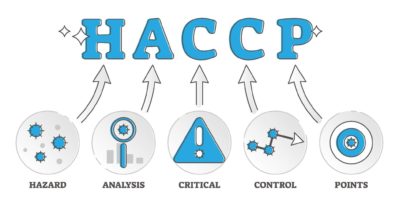5 Components of a HACCP-Compliant Food-Processing Uniform

Employee uniforms are essential when it comes to safety in the food processing industry. A food factory worker uniform must prevent dangerous contaminants and pathogens from spreading to food. Since these are usually too small to see, the right kind of uniform is needed, and it must be managed properly to be effective.
So what kinds of uniforms should be worn by employees in the food processing industry? Fortunately, employers have guidance in this matter, specifically from HACCP (meaning Hazard Analysis Critical Control Points). This is a management system widely used in this sector, and although it does not include precise standards for food industry uniforms, its guidelines should be referred to when considering the type of clothing that employees wear while on duty.
What Is HACCP?

Hazard Analysis Critical Control Points, usually referred to as HACCP, were implemented in 1995 by the National Advisory Committee on Microbiological Criteria for Foods, a committee of the U.S. Department of Agriculture and inclusive of agencies such as the U.S. Food and Drug Administration (FDA). Internationally recognized, HACCP is a method of identifying and managing food-safety-related risks, including biological, chemical, and physical hazards, according to seven standard principles:
- Conduct a hazard analysis
- Determine critical control points
- Establish critical limits
- Establish monitoring procedures
- Establish corrective actions
- Establish verification procedures
- Establish documentation procedures
The management system applies throughout the food supply chain, from raw material production to procurement and handling, to distribution and consumption. It not only helps regulatory agencies but customers and the general public know an active food safety program meets the latest standards. However, it’s not the only aspect of a food safety program to consider. It doesn’t cover traceability, pest control, hygiene, and other crucial elements. Let’s take a look at what you need to know about HACCP for food manufacturing uniforms.
Must-Haves for HACCP-Compliant Food Processing Uniforms

To ensure a food factory worker uniform is compliant, it must have the following characteristics:
- No Pockets: Pockets cannot be placed above the waist on any kinds of food manufacturing uniforms, and many facilities ban pockets altogether. An HACCP-compliant uniform in general may fit either format. Items in pockets can easily fall out. These can be contaminated with bacteria, even after washing, and they can make food dangerous to consume and pose a potential choking hazard.
- No Buttons: There can be no buttons anywhere on the garment. Buttons are prone to falling off. Like pockets, they can trap bacteria in hard-to-reach spots. Plus, a button that falls off is itself a hazard that can end up in a food product and put unsuspecting consumers at risk.
- Durable Fabric: Food processing uniforms require frequent washing. They must therefore be made of fabrics that can withstand many washings without breaking down. Otherwise, tiny fibers or threads could contaminate food during processing. A durable fabric won’t shed and will continue to support HACCP compliance safety initiatives at any food processing facility.
- Proper Fit: Every aspect of the garment must properly fit the wearer, including body and sleeve length. No element can be trailing, as it can become a hazard in terms of food contamination. Trailing fabric can also be a spill hazard. Not to mention well-fitted uniforms are more comfortable, which helps improve productivity among employees wearing compliant garments.
- Clean: HACCP uniforms must be sanitary to prevent food contamination. Aside from garments that tolerate repeated washings, it’s essential to follow the best procedures for cleaning and sanitation, which means having a written process to follow. It should account for chemicals used and how employees exercise personal hygiene.
Following these food safety clothing requirements can substantially reduce the risk of contamination.
What Is HACCP Certification?

HACCP certification is a rigorous process that ensures a food processing facility complies with Hazard Analysis Critical Control Point standards. This revolves around identifying and controlling potential hazards in the food production process to ensure safety and quality.
There are official courses available to obtain HACCP certification. These are offered by various accredited organizations and provide training on the principles and application of the HACCP system.
Becoming HACCP certified involves a thorough examination of a facility’s processes, from receiving raw materials to final product distribution, to verify that critical control points are effectively managed. A vital part of this certification process includes ensuring that employees wear appropriate food processing clothing, such as uniforms without pockets above the waist and made from easily sanitizable materials. This helps prevent contamination and maintain high hygiene standards throughout the food production process.
Trust Prudential Overall Supply for Uniform and Laundry Services
We offer many types of uniforms and apparel, personal protective equipment, and cleanroom services. Our range of HACCP-compliant food processing uniforms includes shirts, coats, smocks, and pants. If your budget doesn’t allow for outright purchase and proper laundering of these items, our HACCP uniform rental service can provide a cost-effective solution. In addition, laundry services ensure your food factory worker uniforms remain compliant and safe to use. Browse our catalog and services or call 800-767-5536 to learn more.